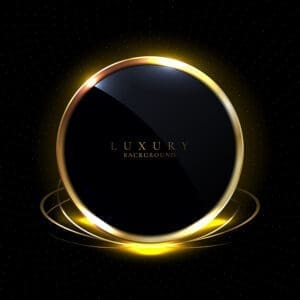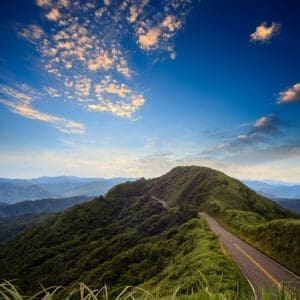
The Sarkies brothers (Martin, Tigran, Aviet and Arshak) were among the first wave of Armenian refugees fleeing the tyranny and persecution of the Turkish and Russian empires. They came from a long line of Persian merchants, who for centuries had prospered via the ancient trading route known as the Silk Road.
By the 1860s, the Silk Road was in decline and, with the opening of the Suez Canal in 1869, the Sarkies were forced to seek their fortunes elsewhere. Martin Sarkies, then an engineer, moved to Penang in Malaysia, where Tigran eventually joined him after spending several years trading in Java, Indonesia.
Tigran was keen to exploit the new world of hospitality, perceiving it as potentially more profitable than his trading enterprises. In 1884, the brothers joined forces and opened the Eastern Hotel in downtown Penang. When a third brother, Aviet, arrived a year later, the brothers opened their second hotel in Penang, the Oriental. Two years after that, the Sarkies extended their business to Singapore. With their keen sense of location, the brothers rented a ten- room boarding house on the beach, and by December 1887 Raffles Hotel in Singapore was open for business.
The Sarkies’ hotels offered a novel mixture of Asian-European hospitality not previously available in South-East Asia. Providing personalised service, as well as fine dining and magnificent surroundings, the Sarkies were perfectionists in an era that sought, and relished, luxury and style above all else. They became prominent society figures who not only managed their hotels with flair and aplomb, but also became socially well-connected to many of their guests.

Consolidation and Expansion
Both the Eastern and Oriental hotels in Penang thrived and, in 1889, they were amalgamated into one hotel, renamed the Eastern and Oriental, or the E&O – the name by which it is known today. When Martin retired in 1890 and returned to Isfahan in Persia (now Iran), the youngest brother, Arshak, joined the team and took over the E&O. Tigran remained in charge of Raffles, and Aviet travelled to Burma (Myanmar) to open a Sarkies hotel in Rangoon (now Yangon).
When Aviet first came to Rangoon he spotted an ideal location directly opposite the main jetty on the banks of the Rangoon (Yangon) River. Unfortunately, the site was not available, and he was forced to secure premises within the town. This first enterprise in Burma was the smallest and least successful of all the Sarkies hotels. Ten years later the original riverside site finally became available, and Aviet, who was said to be the most retiring of the brothers, opened the superb Strand Hotel – a grand establishment that survives to this day as one of Yangon’s most enduring landmarks.
By the 1900s, the Sarkies brothers had become Asia’s leading hoteliers. Their enterprises dominated where others failed or feared to tread. They introduced the concept of fine dining to their hotels, even importing caviar from the Caspian Sea. Their establishments became symbols of the British Empire, and their influence on the hotels of Asia has resonated down the ensuing 100 years.
In 1910, the Sarkies were at the peak of their success. They had captured a highly visible and profitable corner of the tourism market. After 23 years running Raffles, a sick and weary Tigran retired to England where he died in 1912, aged 51. With Tigran’s death, Aviet was now the senior partner in the family firm.
Diminishing returns
All South-East Asian hotels experienced difficulties during World War I. Travel to the region for pleasure all but stopped, and the Sarkies empire began to fall apart. Aviet and Arshak continued to strive for excellence, managing their respective establishments – the Strand and the E&O – with great skill. Aviet Sarkies died in Paris in 1923, and the Strand Hotel was soon put on the market. It was sold to Rangoon restaurateur Peter Bugalar Aratoon and his cousin Ae Amovsie in 1925. During the Japanese occupation of Burma in World War II, the hotel was used to quarter Japanese troops. In the following year, 1942, the Strand’s ownership was transferred to the Imperial Hotel in Tokyo. Soon after, for the first time since the hotel’s establishment, the Burmese people became an important part of the hotel’s clientele. After Burma achieved independence in 1948, the hotel was neglected by postcolonial governments, but today it has been restored to its 1920s glory and is operated by GHM Hotels.
Arshak, the youngest of the four Sarkies brothers, was gregarious and generous to a fault. He loved gambling and women and was supportive of friends who fell on hard times. In his later days at the E&O in Penang, it was said that Arshak ran the hotel more for the pleasure of entertaining his friends than to make money. After the great stock-market crash of 1929, he was forced to tear up a multitude of outstanding accounts from guests, patrons and friends, knowing that he would never be able to recover the money. The stress took its toll and he died in 1931, aged 62.
Four months after his death, Raffles Hotel was taken to court due to a mountain of outstanding debts. It was soon discovered that the Sarkies brothers’ firm had liabilities totalling US$3.5 million. It was the biggest bankruptcy the Colony had ever known. Nevertheless, the legacy of the Sarkies as visionary hoteliers remains intact and undisputed to this day. The Strand, Raffles and the E&O still rank today among the greatest hotels in Asia.



















